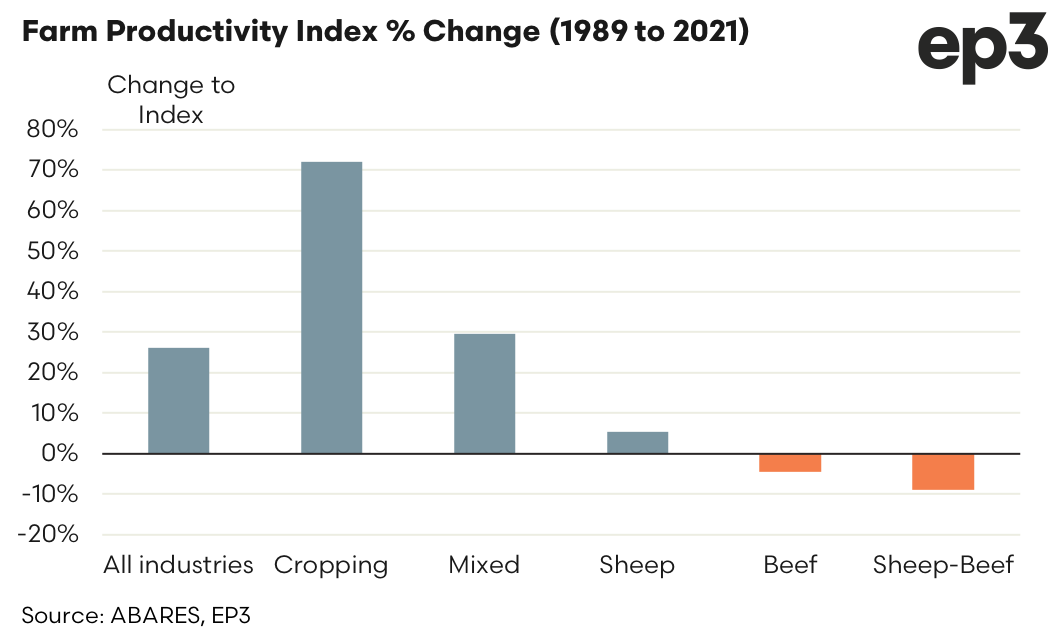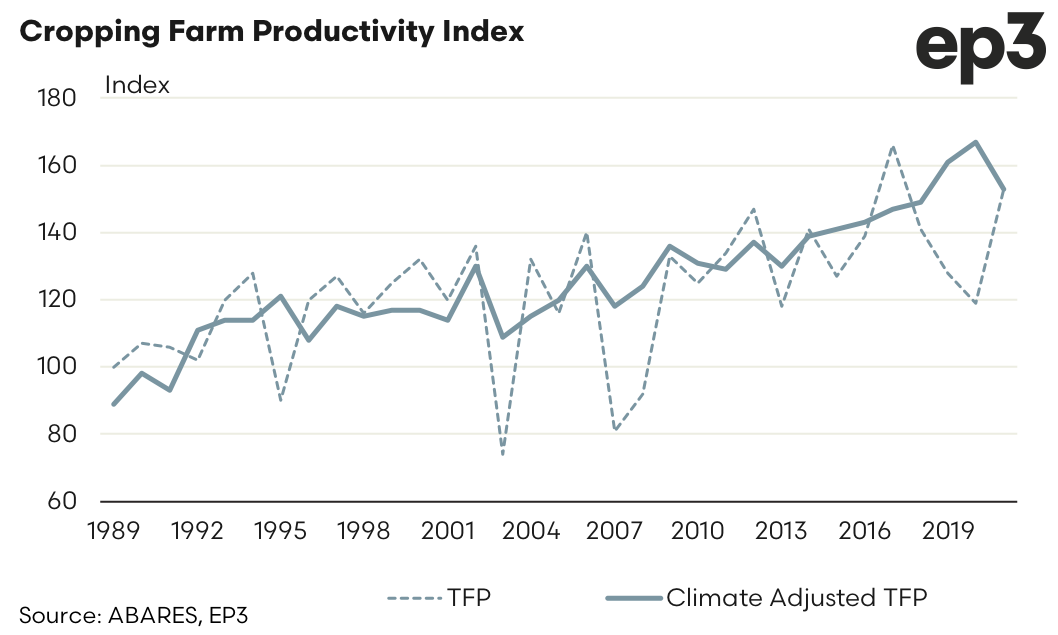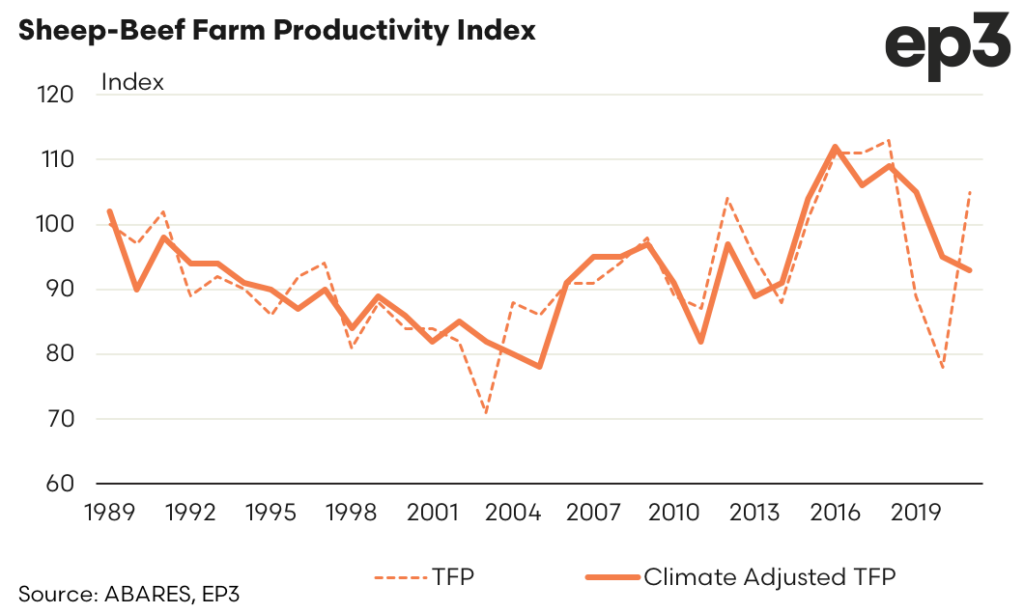When we were kings

The Snapshot
- Over the last three decades broad-acre cropping has seen a 70% increase to their productivity index, according to the ABARES data.
- Cropping enterprises have seen relatively steady growth rates in productivity of around 1.7% per year.
- Meanwhile combined sheep-beef operations have fared the worst, scoring a productivity decline of 0.3% over the last three decades.
- However, productivity on cropping farms is often hampered by drought to a greater degree than for livestock producers.
The Detail
Over the last three decades the Australian Bureau of Agricultural & Resource Economics and Sciences (ABARES) farm productivity index has shown some stellar growth for cropping enterprises. Indeed, broad-acre cropping has seen a 70% increase to their productivity index, well in advance of mixed cropping-livestock enterprises on a 30% gain and the average of all industries combined of around 26% lift in productivity.
An alternative way to express these productivity gains is a measure of the compound annual growth rate (CAGR), which shows the annual growth seen each year for the selected sectors, on average, across the last thirty years. Cropping enterprises have seen relatively steady growth rates of around 1.7% per year. Mixed enterprises have mirrored the trend seen across all industries, with relatively moderate growth rates of around 0.7%-0.8%.
Meanwhile combined sheep-beef operations have fared the worst, scoring a negative CAGR of 0.3% over the last three decades. A time series of the productivity index for sheep-beef operations shows that much of the declining productivity was seen during the early 1990s to the mid 2000s, whith the more recent decade showing a return to increased productivity.
ABARES offer both climate adjusted and conventional productivity data for analysis. Interestingly, a comparison of the climate adjusted productivity trend to the non-adjusted data shows that for cropping enterprises productivity levels are more sensitive to climatic factors such as drought, frost and floods than livestock enterprises.
It appears that the ability to de-stock during drier times allows livestock farmers to moderate their productivity losses. However, despite this ability to respond more flexibly to climate, across the last three decades productivity on livestock enterprises hasn’t exhibited anywhere near the same growth as cropping.










